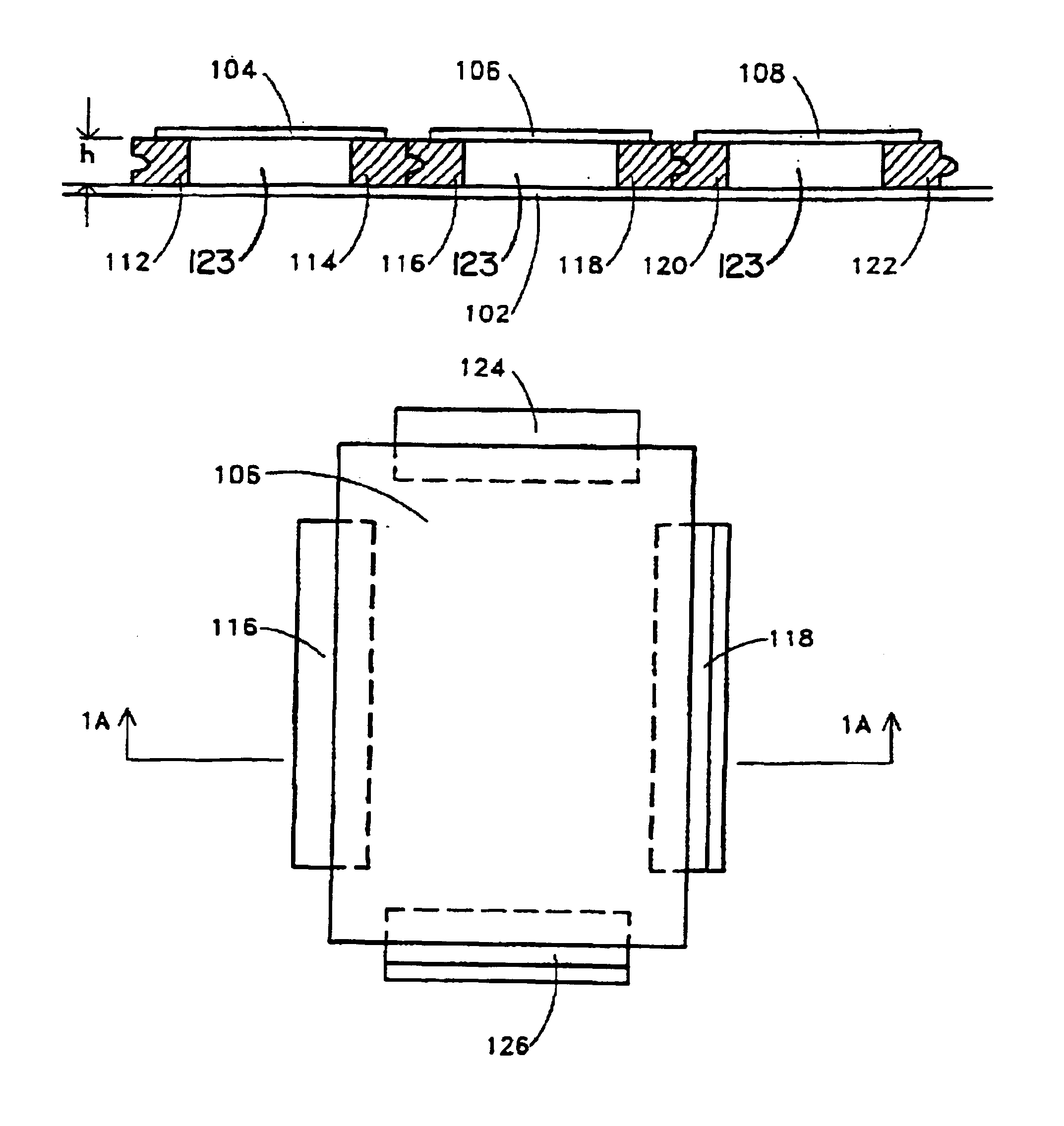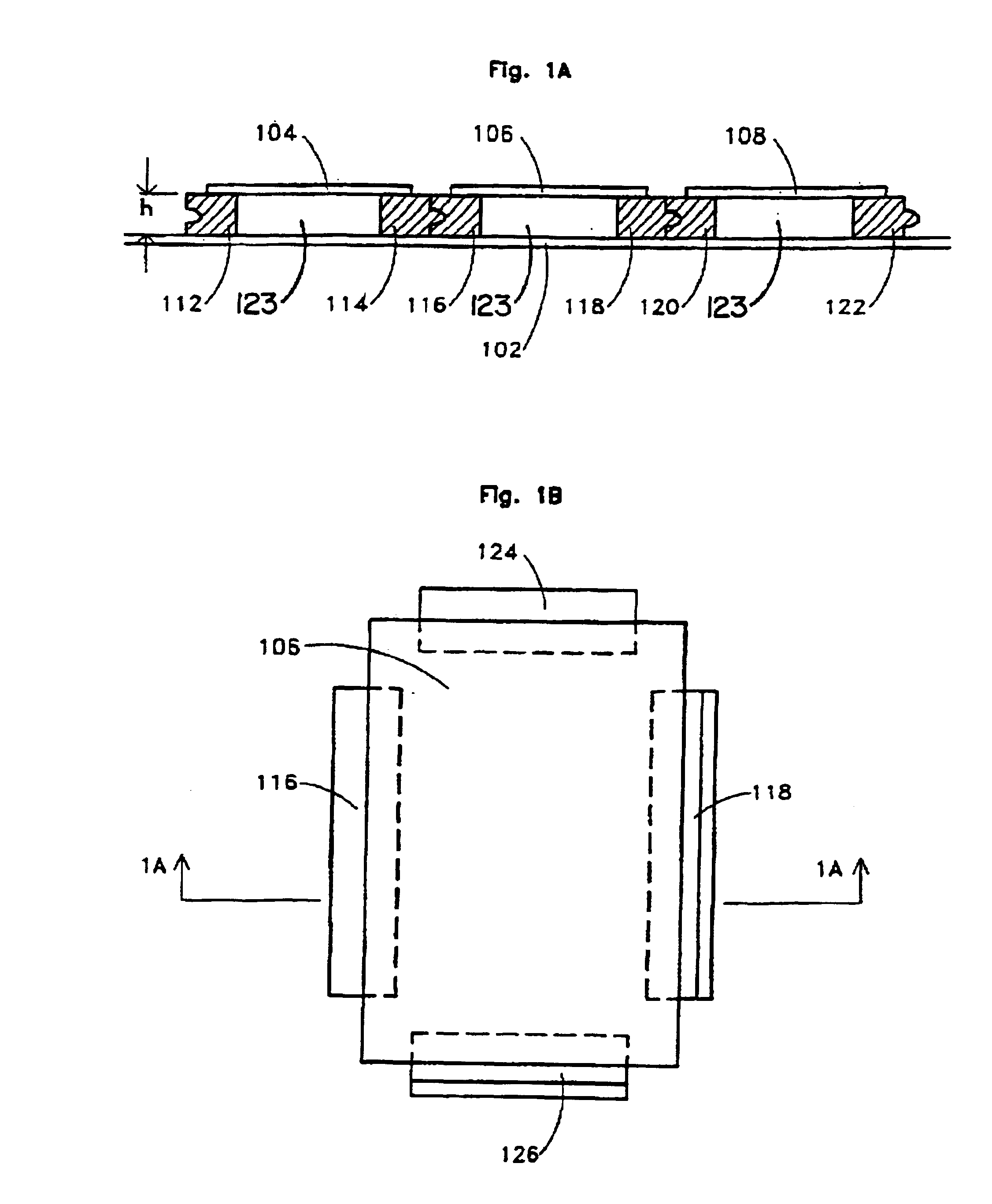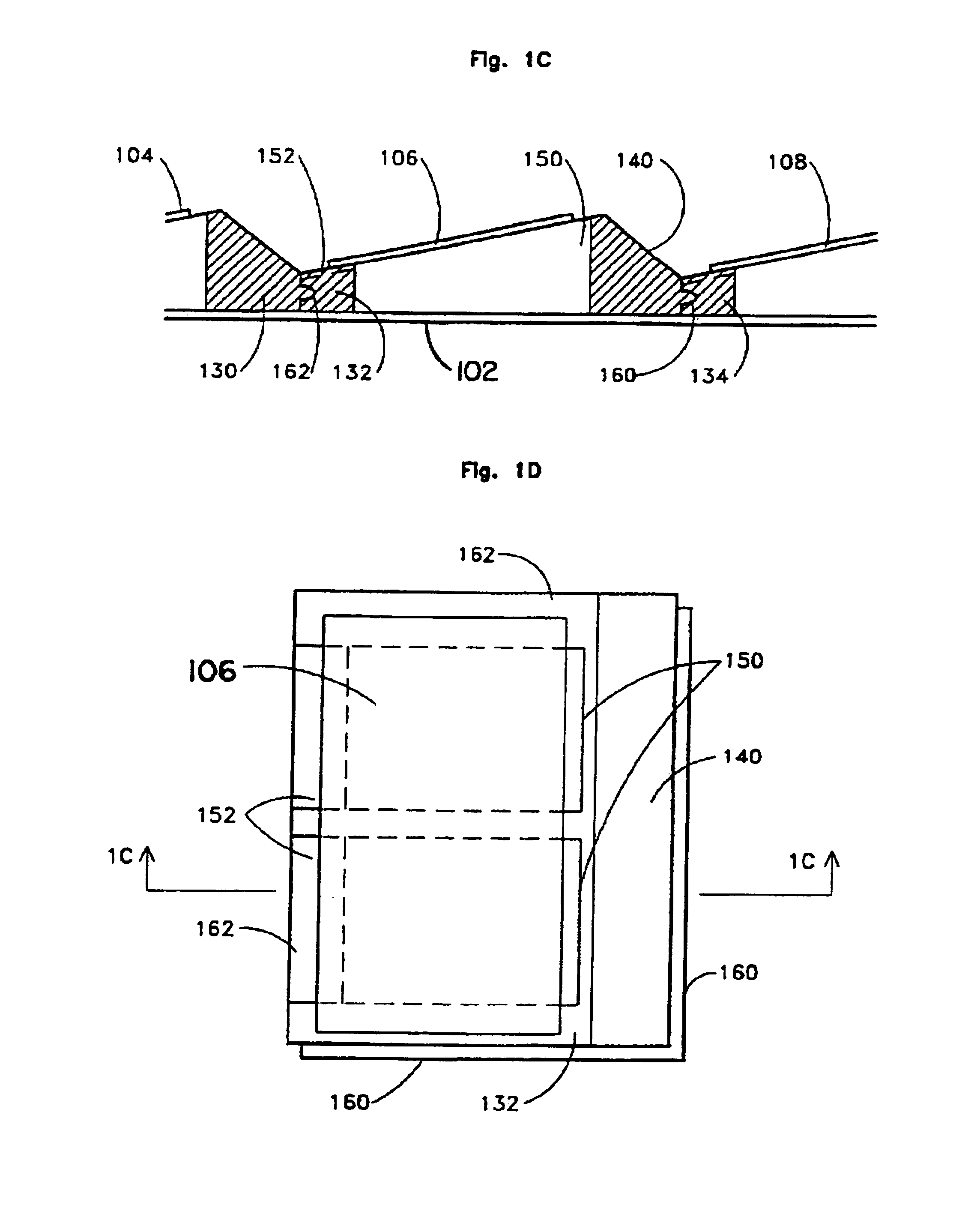Lightweight, self-ballasting photovoltaic roofing assembly
a photovoltaic roof and self-balancing technology, applied in the safety of solar heat collectors, lighting and heating apparatuses, batteries, etc., can solve the problems of increasing assembly complexity, increasing manufacturing costs, and reducing the cost of solar cells, so as to facilitate the transition, reduce air pollution and global warming, and improve the cost competitiveness of photovoltaic technology
- Summary
- Abstract
- Description
- Claims
- Application Information
AI Technical Summary
Benefits of technology
Problems solved by technology
Method used
Image
Examples
Embodiment Construction
Description of FIGS. 1A-1D:
Spacer Geometry Directly on Roofing Membrane
[0033]FIG. 1A shows a sectional view of a photovoltaic roofing assembly. The assembly includes a plurality of photovoltaic modules 104, 106, 108, a plurality of pre-formed spacers, pedestals, or supports 112, 114, 116, 118, 120, 122 which are respectively disposed below the plurality of photovoltaic modules 104, 106, 108 and integral therewith, or fixedly connected thereto. Spacers 112, 114, 116, 118, 120, 122 are disposed on top of a roofing membrane 102. Photovoltaic modules 104, 106, 108 and the associated spacers 112-122 define open regions 123 beneath the photovoltaic modules.
[0034]Membrane 102 is supported on conventional roof framing (not shown), and may be attached thereto by conventional methods, such as fasteners or adhesives. Membrane 102 may also rest directly on an insulation block which is supported on conventional roof framing. Modules 104, 106, 108 are electrically connected using electrical condu...
PUM
 Login to View More
Login to View More Abstract
Description
Claims
Application Information
 Login to View More
Login to View More - R&D
- Intellectual Property
- Life Sciences
- Materials
- Tech Scout
- Unparalleled Data Quality
- Higher Quality Content
- 60% Fewer Hallucinations
Browse by: Latest US Patents, China's latest patents, Technical Efficacy Thesaurus, Application Domain, Technology Topic, Popular Technical Reports.
© 2025 PatSnap. All rights reserved.Legal|Privacy policy|Modern Slavery Act Transparency Statement|Sitemap|About US| Contact US: help@patsnap.com



